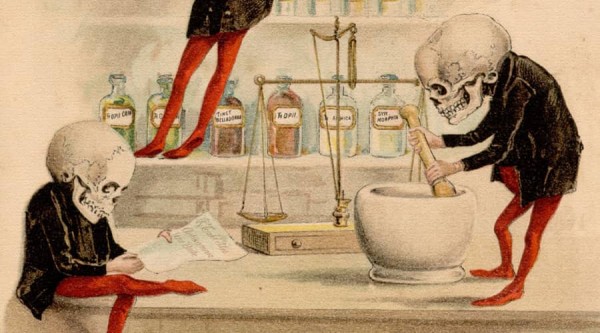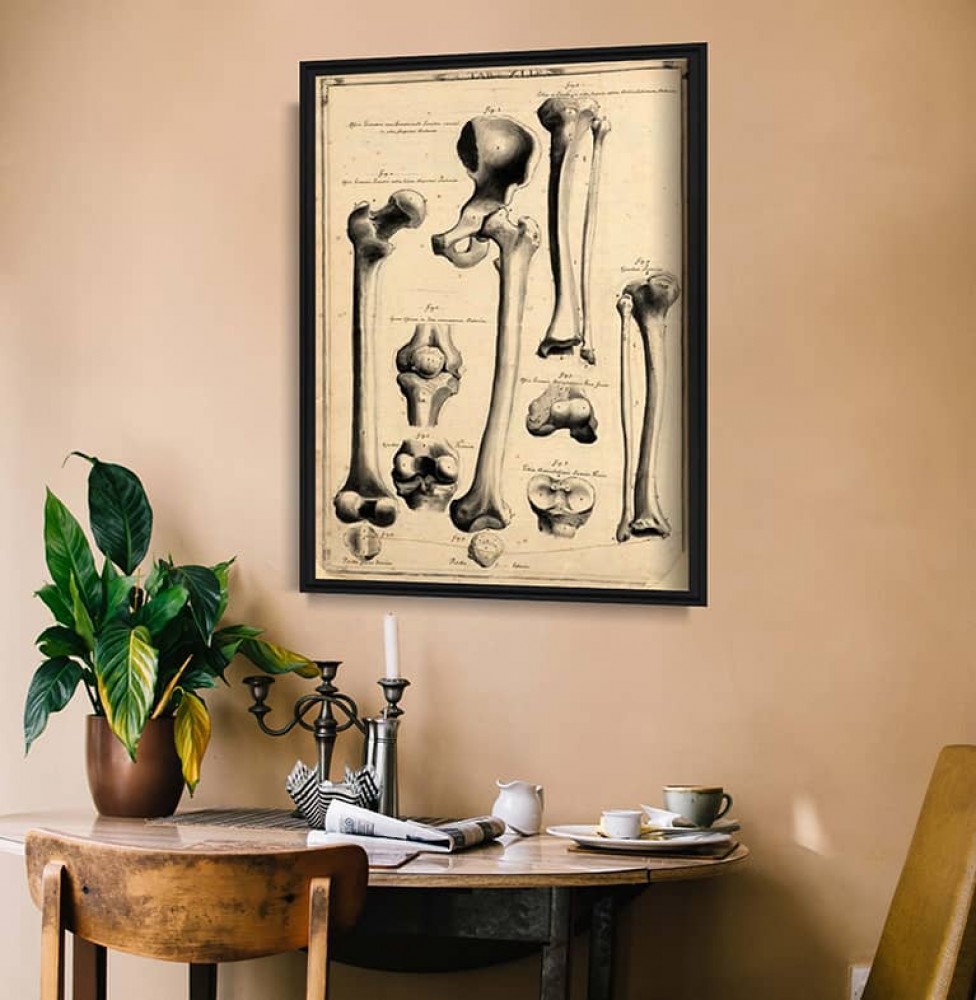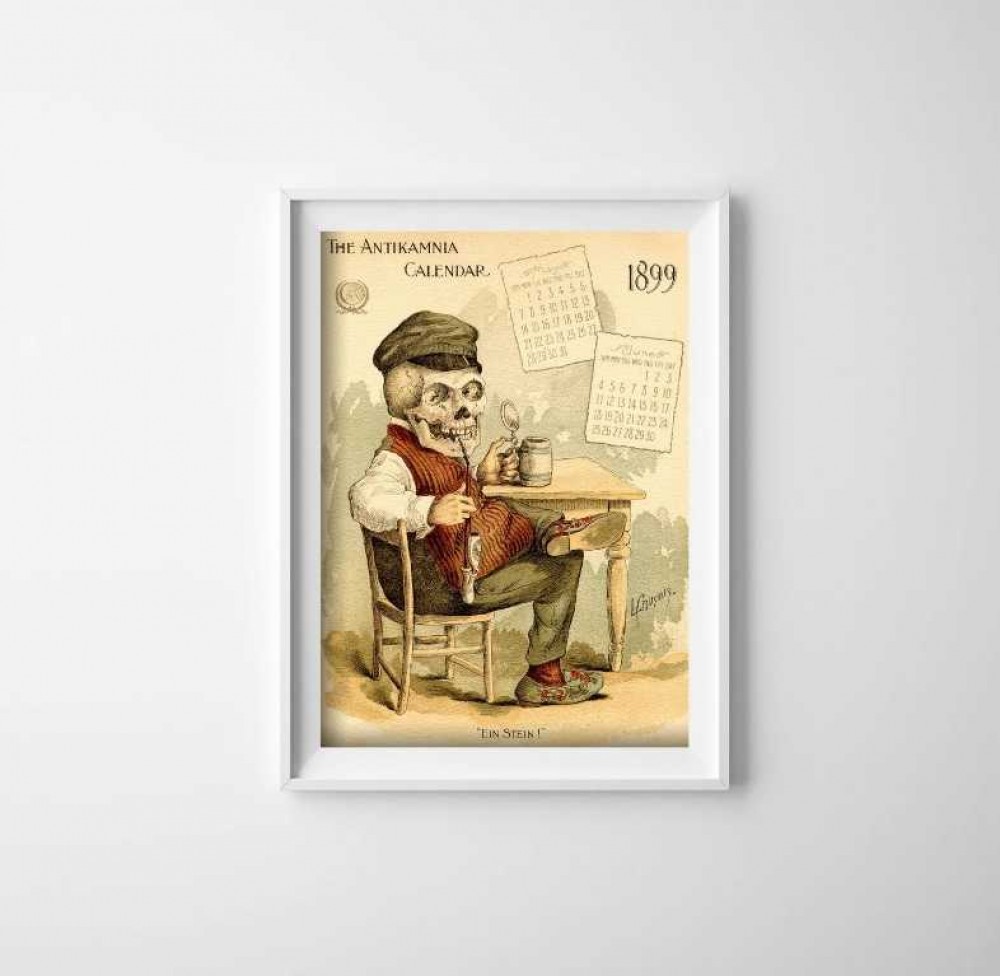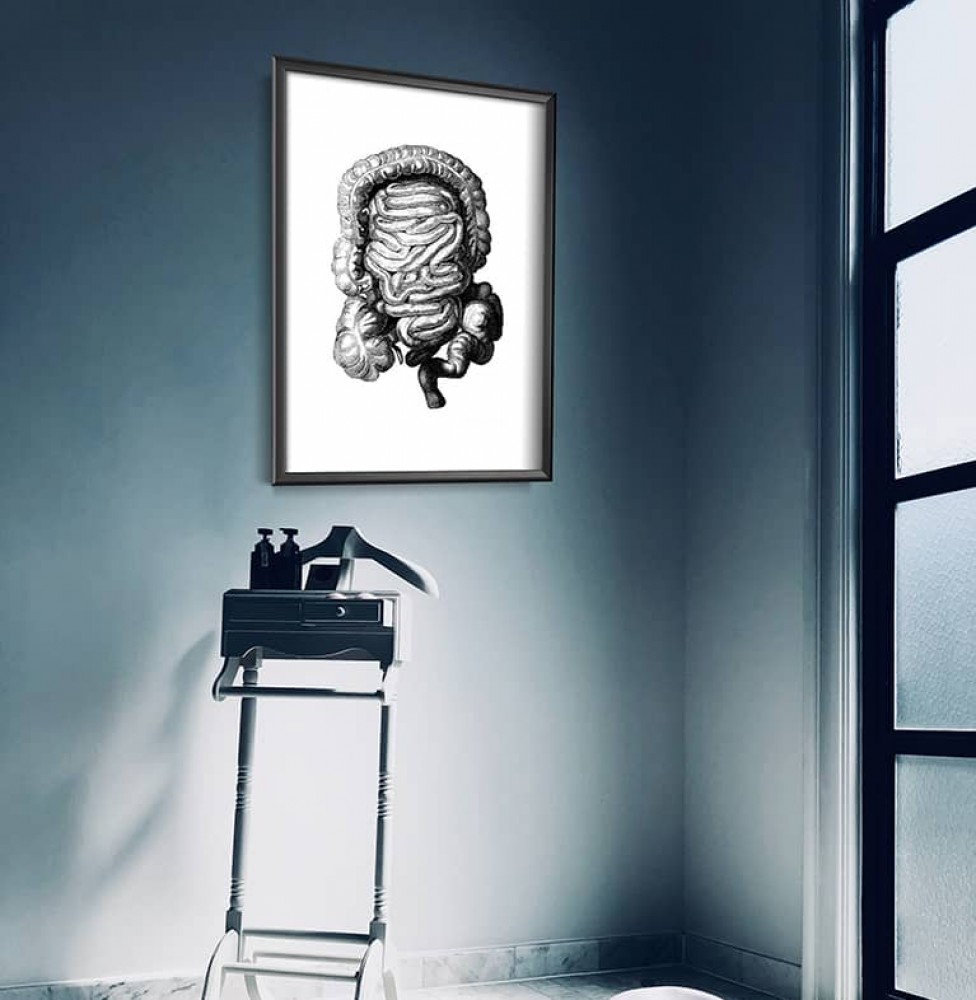
A brief history of the study of the human body
The science of body composition, i.e., anatomy, has been a primary discipline from the early days of the medical education curriculum. Although the study on human anatomy reached its heyday in the Renaissance, which we already featured in the article "Posters, reproductions - Leonardo da Vinci", this area of study accompanies man from the very beginning of his existence. Although until quite recently we believed that the ancient Greeks and Egyptians were the first to map out the human body, the latest discovery of historians forced us to revise and update the state of our historical knowledge. According to research conducted by British and American scientists, it is indicated that it was the Chinese, who, well over two thousand years ago, mapped the human body for the first time!
Whilst already in the 19th century the study of anatomy grew into a fully independent science with its well-established methodology, the 20th century marked even more substantial research opportunities, allowing for obtaining in-depth knowledge on the organs and structures of the human body. The 20th century and enormous technological advancement triggered the onset of the formation of medical specialties, allowing for a better and better understanding of our bodies.

Reproductions of Leonardo da Vinci's anatomical charts
We just mentioned the Renaissance for a reason. The majority of posters on our offer are reproductions of anatomical charts made by nobody else but Leonardo da Vinci.
Leonardo da Vinci's interests unquestionably went beyond the canons of fine arts. His primary goal was to understand human anatomy. And in this field, Leonardo da Vinci derived knowledge from Verrocchio, and he also collaborated with the professor of anatomy, Marcantonio della Torre, with whom he performed corpse dissections. In his work, da Vinci relied primarily on his own observations, he also developed innovative drawing techniques, which allowed him to accurately transmit information about the human body. To this day, 750 drawings of his groundbreaking anatomical discoveries have survived - one of the examples could be that Leonardo da Vinci was the first to make a detailed description of the human spine.

If you want to find out more about this subject, we are heartedly encouraging you to read our previous article. The history of Leonardo da Vinci's anatomical research is so fascinating that it should not be shortened to one paragraph.
John Fotherby
Little is known about John Fotherby, except that he is the author of numerous anatomical charts in the years 1729-1730. Our offer includes reproductions of anatomical charts with drawings, whose original copies were drawn with a quill pen and ink.

The Antikamnia Calendar
The first editions of the 1899 and 1900 promotional calendars produced by Antikamnia Chemical Company feature the comically gruesome and somewhat grotesque artworks of "skeleton sketches" by Louis Crusius, a physician and amateur artist. The company produced these calendars in limited editions between 1897 and 1901 and started sending them out to members of the medical professions in the United States and Europe, as part of an advertising strategy promoting the patented drug "Antikamnia", a pain reliever based on a coal-tar derivative.
Although Antikamnia Chemical Company aggressively promoted its product as a cure-all medicine from headaches to tuberculosis, the main ingredient was known to be toxic in high doses. Following the introduction of the Food and Drug Act of 1906, requiring that products containing hazardous substances bear labeling as such, Antikamnia manufacturers tried to circumvent this requirement by substituting the main active ingredient with a less toxic derivative.


In 1910, the shipment of the Antikamnia drug was seized for violating the law, and the company itself was convicted. Antikamnia shut a few years later, but not before one of the founders of the company became rich. The drug itself has seen many bantering articles, where it was often referred to as "a deadly pain reliever sold by skeletons."
Muscles, bones and organs on the posters
Scientific research is one thing, but how else can anatomical charts be used? An anatomical poster is ideal for educational purposes for physiotherapy treatments or medical or physiotherapy courses. Medical plaques are often used in physiotherapy offices, GP practices, and other medical facilities. Such a poster certainly makes it easier for a physiotherapist or doctor to explain how the human body works, facilitating the visualization and explanation of the functioning of the human body, the course of the disease or the clarification of the treatment method.

How to incorporate anatomical posters into the interior?
High-quality anatomical posters are an excellent choice as a wall decoration for medical and physiotherapy offices, clinics or medical stores. The eye-catching juxtaposition of several posters depicting the structure of the human body will certainly attract the attention of every client or patient waiting in the clinic's waiting area, making his visit in the doctor's office, we hope, a bit less stressful.
A little bit gruesome but funny reproductions of the Antikamnia calendar is a proposal for those who love the grotesque. Such a poster will look great on the wall in the living room or study, both alone and in combination with other posters. We believe that our anatomical posters will perfectly complement, e.g., botanical boards or reproductions of old maps.
You may also like:
POSTERS REPRODUCTIONS - LEONARDO DA VINCI
FEATURES OF EXPRESSIONISM AND IMPRESSIONISM IN PAINTING - ARTISTS, POSTERS, ART

How to arrange a kitchen in retro style?

How to decorate a living room in retro style?

Loft in the climate of an old factory - how to decorate an industrial interior?


